Introduction

The culinary world is filled with delicious dishes and flavors that can transport us to different countries and cultures. Mastering the pronunciation of international culinary terms is not only a fun way to improve our language skills, but it also enhances the overall dining experience. When it comes to Italian cuisine, proper pronunciation is essential to fully appreciate the flavors and heritage behind each dish. In this article, we will focus on mastering the pronunciation of Caprese Salad, a classic Italian dish that highlights the simplicity of fresh ingredients. By understanding the correct pronunciation, you can bring an authentic touch to your Italian culinary adventures.
The Significance Of Mastering Italian Culinary Language
Mastering the Italian culinary language holds great significance in the world of food and dining. Italian cuisine is renowned worldwide for its rich flavors and traditional recipes. By mastering the pronunciation of Italian culinary terms, including dishes like Caprese Salad, individuals can fully immerse themselves in the cultural experience of Italian cuisine. It allows for effective communication with Italian chefs and fellow food enthusiasts, enhancing the overall dining experience. Additionally, acquiring proficiency in Italian culinary language opens up a world of culinary traditions, enabling individuals to appreciate and explore the nuances of Italian cooking techniques and ingredients.
Understanding The Importance Of Correct Pronunciation In Caprese Salad
Understanding the importance of correct pronunciation in Caprese Salad is crucial for both cultural and practical reasons. When ordering this classic Italian dish, having the ability to pronounce it correctly shows respect for the Italian culture and language. It also allows for effective communication with Italian chefs and fellow food enthusiasts, enhancing the overall dining experience. Additionally, accurate pronunciation ensures that the dish is prepared with the correct ingredients and flavors, preserving the authenticity of Caprese Salad. Whether you are a food lover or a language enthusiast, mastering the correct pronunciation of Caprese Salad is a valuable skill to possess.
Caprese Salad: A Classic Italian Dish
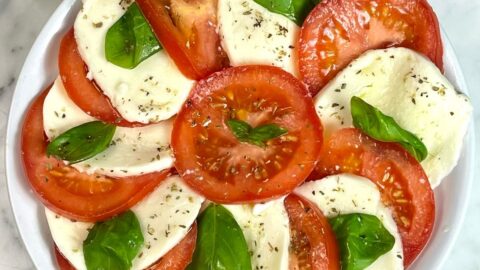
Caprese Salad is a classic Italian dish that has gained popularity all over the world. Its simplicity and emphasis on fresh ingredients make it a beloved choice among food enthusiasts. The salad typically consists of fresh mozzarella cheese, ripe tomatoes, basil leaves, and a drizzle of olive oil. The combination of these ingredients creates a harmonious balance of flavors that is both refreshing and satisfying. Caprese Salad is not only a delicious appetizer or side dish, but it also captures the essence of Italian cuisine and culture. Its vibrant colors and aromatic flavors make it a true classic that never fails to impress.
A Brief History Of Caprese Salad
Caprese Salad has a rich history rooted in Italian culinary traditions. It originated in the beautiful island of Capri, located in the Gulf of Naples. The salad is said to have been created in the 1950s as a celebration of the colors of the Italian flag: red tomatoes, white mozzarella cheese, and green basil leaves. Originally a local specialty, Caprese Salad gained popularity throughout Italy and eventually made its way to international menus. Today, this classic dish is cherished worldwide for its simplicity and fresh flavors.
The Key Elements And Ingredients Of Caprese Salad
Caprese Salad is known for its simple yet flavorful combination of ingredients. The key elements of this classic Italian dish include fresh mozzarella cheese, ripe tomatoes, and fragrant basil leaves. These ingredients are carefully layered on a plate, creating a beautiful and vibrant salad. The quality of the ingredients is crucial, as the flavors should shine through. The mozzarella should be creamy and moist, the tomatoes ripe and juicy, and the basil leaves aromatic. Finally, a drizzle of olive oil and a sprinkle of salt enhance the flavors, completing the perfect Caprese Salad.
Pronouncing Caprese: The Basics
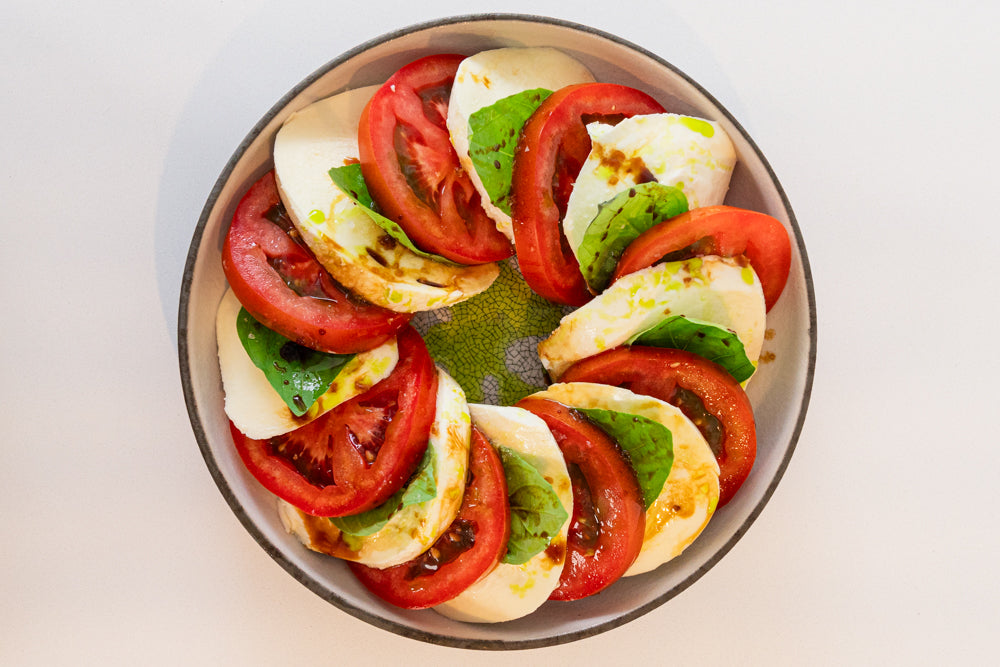
To properly pronounce “Caprese,” it is important to understand the basics of Italian pronunciation. Start by saying the first syllable, “ca,” like the word “cat” without the “t” sound. The second syllable, “pre,” is pronounced like the word “pray” without the “y” sound. Finally, the last syllable, “se,” is pronounced like the word “say.” Putting it all together, the correct pronunciation is “cah-PRAY-say.” Practicing these syllables and intonation will help you confidently order a Caprese Salad and impress your friends and servers with your accurate pronunciation.
Mastering The Correct Pronunciation Of Caprese
Mastering the correct pronunciation of Caprese can greatly enhance your Italian culinary language skills. To pronounce Caprese correctly, start by saying the first syllable, “ca,” like the word “cat” without the “t” sound. The second syllable, “pre,” should be pronounced like the word “pray” without the “y” sound. Finally, the last syllable, “se,” should be pronounced like the word “say.” Putting it all together, the correct pronunciation is “cah-PRAY-say.” Practicing these syllables and intonation will help you confidently order a Caprese Salad and impress your friends and servers with your accurate pronunciation.
Breaking Down The Syllables And Intonation
Breaking down the syllables and intonation of Caprese is essential for mastering its correct pronunciation. The word is divided into three syllables: “ca,” “pre,” and “se.” When pronouncing “ca,” emphasize the “a” sound like in the word “cat,” without the “t” sound. For “pre,” stress the “e” sound, as in “pray,” without the “y” sound. Finally, for “se,” pronounce it like the word “say.” Maintaining the correct intonation and emphasis on each syllable will help you pronounce Caprese accurately.
Pronouncing Mozzarella: A Crucial Ingredient
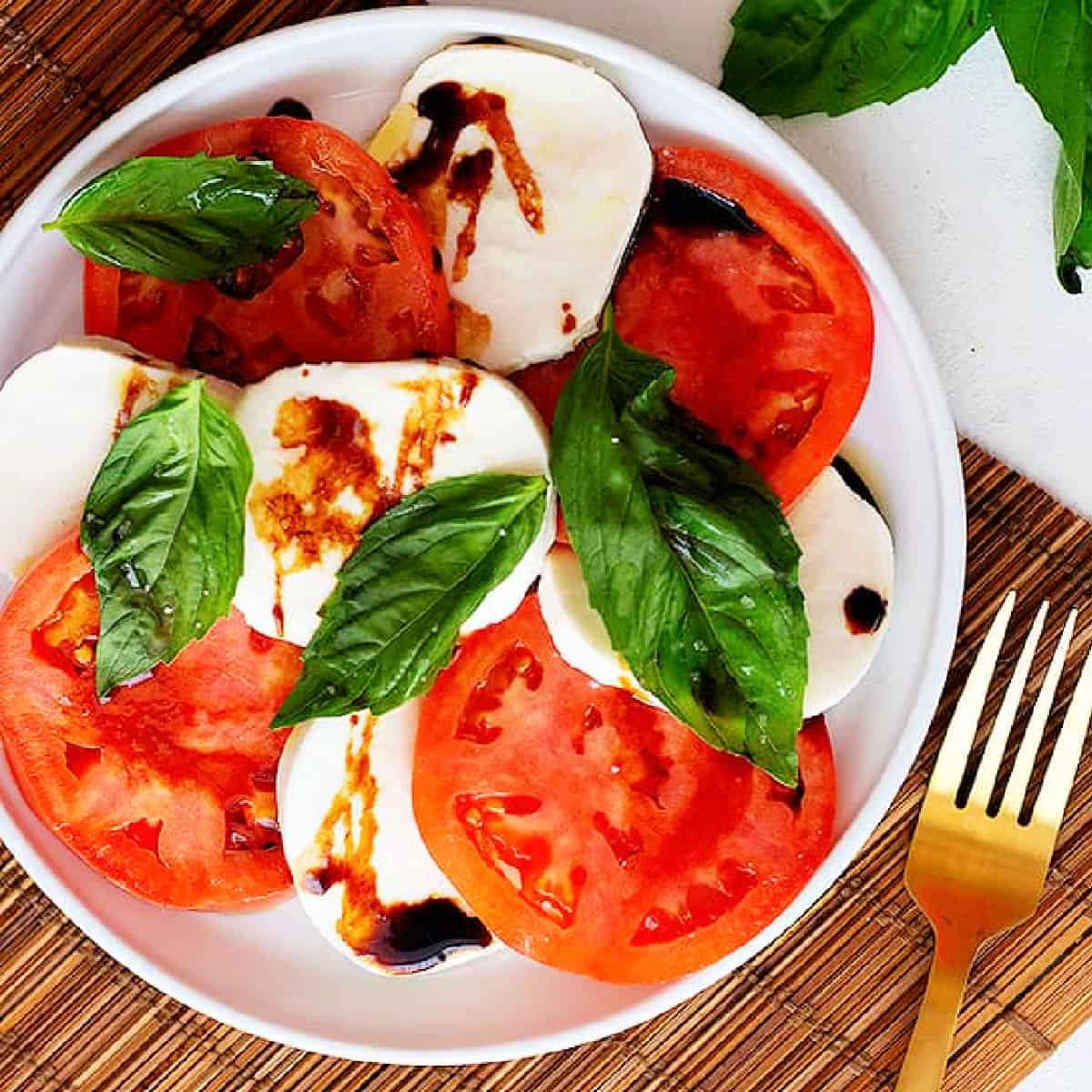
Mozzarella is a crucial ingredient in Caprese Salad, and pronouncing it correctly adds to the authenticity of the dish. To pronounce Mozzarella, emphasize the “o” sound in the middle, like in the word “go.” The “z” sound should be pronounced like a soft “ts” sound, similar to the word “pizza.” Lastly, stress the “e” sound at the end, like in the word “bed.” Practice saying Mozzarella out loud, and you’ll be able to confidently ask for this essential ingredient when preparing or ordering Caprese Salad.
Mastering The Correct Pronunciation Of Mozzarella
Mastering the correct pronunciation of Mozzarella is essential for any true Caprese Salad aficionado. To pronounce Mozzarella correctly, emphasize the “o” sound in the middle, like in the word “go.” The “z” sound should be pronounced like a soft “ts” sound, similar to the word “pizza.” Lastly, stress the “e” sound at the end, like in the word “bed.” By practicing the correct pronunciation, you’ll be able to confidently ask for this crucial ingredient when preparing or ordering Caprese Salad. So, go ahead and perfect your Mozzarella pronunciation to elevate your culinary experience!
Tips For Pronouncing The Double ‘z’ Sound
When it comes to pronouncing the double ‘z’ sound in Mozzarella, there are a few tips to keep in mind. First, the ‘z’ should be pronounced like a soft “ts” sound, similar to the word “pizza.” It should not be pronounced as a hard “z” sound. Next, make sure to emphasize the double ‘z’ and prolong the sound slightly. This will help capture the authentic pronunciation of Mozzarella. Practice saying words like “pizza” and “mozzarella” to strengthen your ability to pronounce the double ‘z’ sound accurately.
Pronouncing Basil: Adding Aromatic Flavor
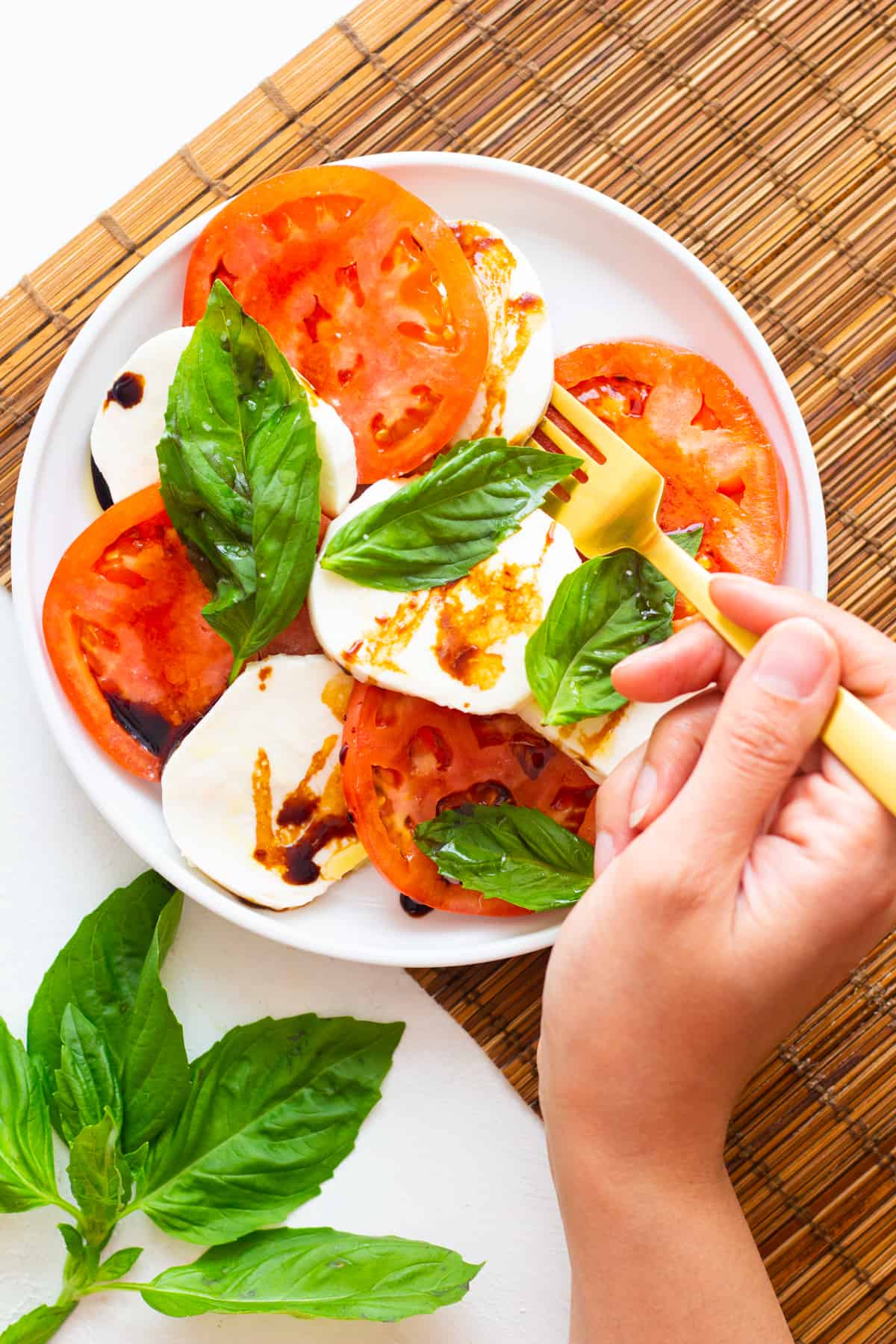
Basil is an essential ingredient in Caprese Salad, adding a burst of aromatic flavor to the dish. To pronounce basil correctly, emphasize the first syllable “bay” and then add “zil” at the end. It is important to note that the pronunciation of basil in Italian differs from the English name “Basil.” In Italian, the emphasis is on the first syllable and the “l” at the end is softened. Mastering the correct pronunciation of basil will help you fully appreciate the herb’s aromatic qualities and enhance your Caprese Salad experience.
Mastering The Correct Pronunciation Of Basil
Basil is an essential ingredient in Caprese Salad, adding a burst of aromatic flavor to the dish. To pronounce basil correctly, emphasize the first syllable “bay” and then add “zil” at the end. It is important to note that the pronunciation of basil in Italian differs from the English name “Basil.” In Italian, the emphasis is on the first syllable and the “l” at the end is softened. Mastering the correct pronunciation of basil will help you fully appreciate the herb’s aromatic qualities and enhance your Caprese Salad experience.
Differentiating Between The Namesake Herb And The English Name Basil
Basil, the herb commonly used in Caprese Salad, has a slight difference in pronunciation compared to the English name “Basil.” In Italian, the emphasis is on the first syllable “bay” and the “l” at the end is softened. This pronunciation is essential to fully appreciate the aromatic qualities of the herb. Differentiating between the namesake herb and the English name is crucial to avoid confusion and ensure you are using the correct pronunciation when talking about or using basil in your Caprese Salad.
Conclusion
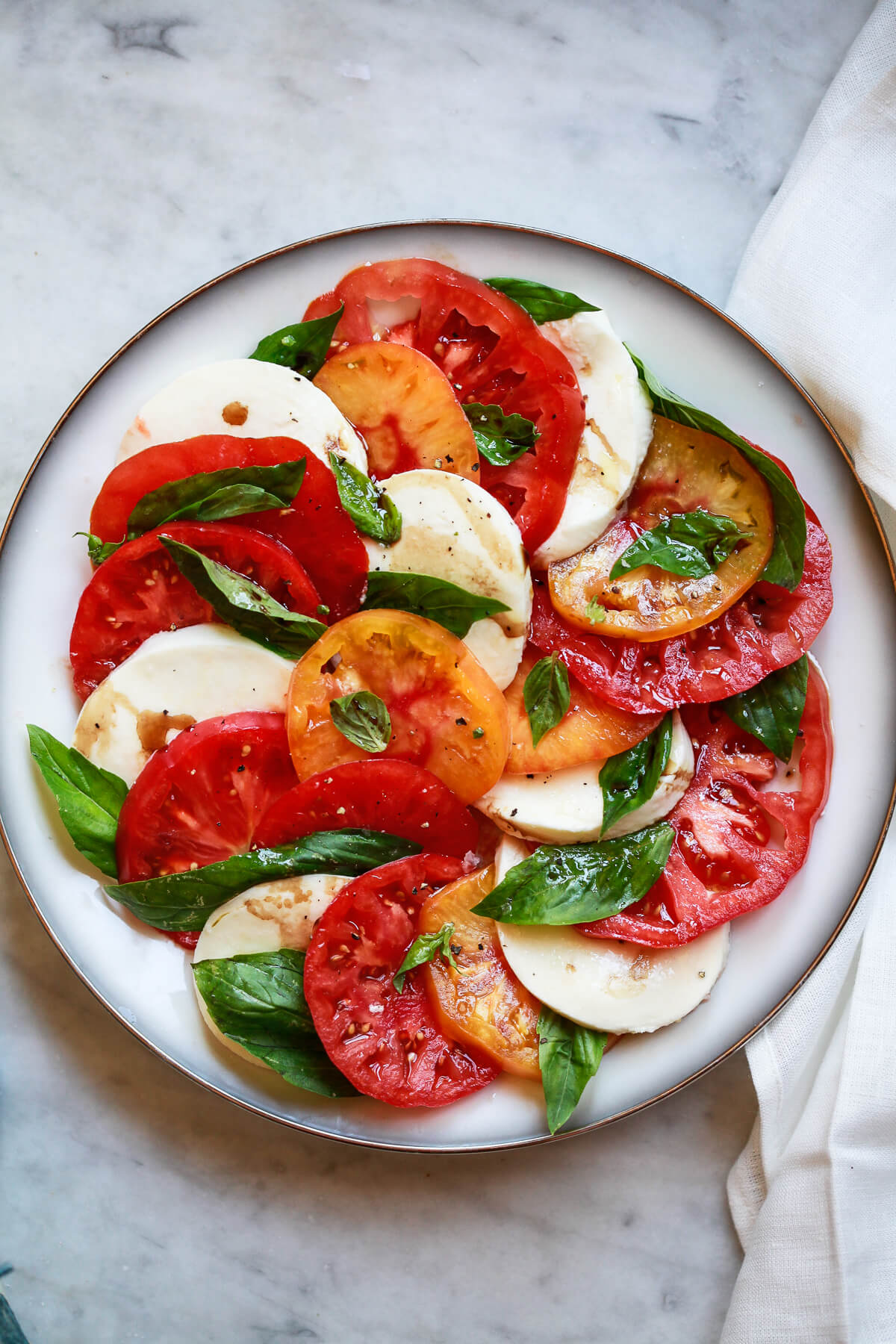
In conclusion, mastering the Italian pronunciation of Caprese Salad and its key ingredients is essential for truly appreciating the culinary experience. Pronouncing caprese, mozzarella, and basil correctly not only allows you to communicate effectively in Italian-speaking environments but also enhances your overall language skills. By recognizing and practicing the correct intonation and syllables, you can confidently order this classic dish at an Italian restaurant. Additionally, continue to improve your Italian pronunciation by practicing and engaging with the language in various ways, such as watching movies or listening to music. Embrace the challenge and enjoy the delicious flavors of Caprese Salad to the fullest.
Mastering Italian Culinary Language For A True Caprese Salad Experience
Mastering the Italian culinary language is essential for experiencing Caprese Salad to its fullest. By learning the correct pronunciation of key ingredients like caprese, mozzarella, and basil, individuals can confidently navigate Italian menus and communicate with authenticity. This enhances the overall dining experience by allowing diners to appreciate the dish’s traditional flavors and cultural significance. Whether enjoying Caprese Salad at a local trattoria or preparing it at home, understanding and mastering Italian culinary language immerses individuals in the rich heritage and gastronomic delights of Italy.
Tips For Further Improving Your Italian Pronunciation
- Practice with native speakers: To improve your Italian pronunciation, engage in conversations with native speakers. They can provide valuable feedback and help you refine your pronunciation skills.
- Use online resources: Take advantage of online language learning platforms and pronunciation guides that offer audio samples and exercises. Listen to native speakers pronouncing Italian words and practice repeating them.
- Watch movies and TV shows: Immersing yourself in the Italian language through movies and TV shows can help you pick up on pronunciation nuances and improve your overall language skills.
- Read aloud: Practice reading Italian texts out loud to strengthen your pronunciation and fluency. Focus on pronouncing each word accurately and pay attention to the rhythm and intonation.
- Take a pronunciation course: Consider enrolling in a pronunciation course specifically tailored for learning Italian. These courses often provide detailed instruction on proper pronunciation and offer opportunities for practice and feedback.
Remember, consistent practice and exposure to the Italian language are key to improving your pronunciation skills. Embrace the process and enjoy the journey of mastering the beautiful language of Italy.
Frequently Asked Questions about Pronunciation of Caprese Salad
Q: How do you pronounce “Caprese”?
A: The correct pronunciation of “Caprese” is kah-PRAY-zay.
Q: Is there an alternative pronunciation for Caprese?
A: Yes, some people might pronounce it as kah-PREEZ, but the more widely accepted way is kah-PRAY-zay.
Q: What is the origin of Caprese salad?
A: Caprese salad is an Italian dish that originated on the island of Capri in the Gulf of Naples. It was created as a way to showcase the local produce and is now famous worldwide.
Q: How do you prepare Caprese salad?
A: Caprese salad consists of fresh mozzarella cheese, tomatoes, basil leaves, and extra-virgin olive oil. The ingredients are usually arranged in layers and then seasoned with salt and pepper.
Q: Is Caprese salad typically served as an appetizer or a main course?
A: Caprese salad is commonly served as an appetizer due to its light and refreshing nature. However, it can also be enjoyed as a main course or a side dish.
Q: Can Caprese salad be customized with additional ingredients?
A: Yes, while the traditional Caprese salad recipe includes only mozzarella, tomatoes, basil, and olive oil, you can certainly customize it to your liking. Some popular additions include balsamic glaze, avocado, prosciutto, or even a drizzle of pesto sauce.
Q: Are there any specific rules for serving Caprese salad?
A: Caprese salad is best served fresh at room temperature or lightly chilled. It is important to use high-quality ingredients and ensure that the mozzarella and tomatoes are sliced evenly to create an aesthetically pleasing presentation.
Q: Can Caprese salad be prepared in advance?
A: Caprese salad is best enjoyed immediately after being assembled to preserve the freshness of the ingredients. However, you can prepare the individual components in advance and assemble them just before serving.
Q: Can I make Caprese salad in different shapes or forms?
A: While the traditional way to serve Caprese salad is by layering the ingredients, you can also get creative with its presentation. You can skewer the ingredients onto toothpicks for bite-sized servings or even slice the tomatoes and mozzarella into rounds for a different visual appeal.
Q: How can I pronounce Caprese confidently?
A: Practice makes perfect! Repeat the pronunciation “kah-PRAY-zay” several times and listen to audio samples to familiarize yourself with the correct way of saying it. Don’t worry, with a little practice, you’ll pronounce it like a pro!

We are a small takeaway restaurant offering a great selection of food cooked by our Thai chef. Table spaces are limited, so please book in advance.